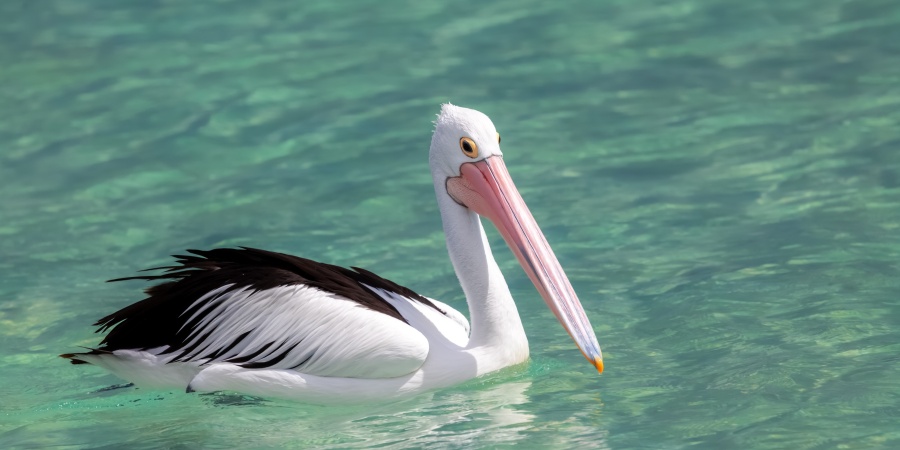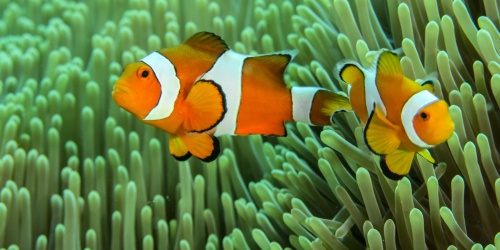
What is an Australian pelican? Australian pelicans (Pelecanus conspicillatus) are large, black and white birds with massive pouched bills. The bird’s pouch is used mainly as a ‘scoop net’ for catching small fish and shrimps. The pouch is also used for catching rain. Birds sitting on nests during heavy rain showers have been seen with their bill open and pouch distended, facing head to the wind. The total pouch capacity is seven litres!
What do they look like? Pelicans are easily recognised by their bold, black and white markings, blue legs, enormous bill with pink pouch and yellow eye-rings. During courtship the pouch becomes bright red, blue and orange.
Where do they live? Pelican are common throughout most of Australia and small numbers occur in Indonesia, New Guinea and the Western Pacific islands. These birds inhabit fresh and salt water lakes and estuaries, rivers, swamps and seashores. They are easily seen in the Shoalwater Islands Marine Park (there is a breeding colony on Penguin Island), the Swan Estuary Marine Park, the Shark Bay Marine Park (especially on the beach at Monkey Mia), the Jurien Bay Marine Park and the Walpole and Nornalup Inlets Marine Park.
What they eat and how: Groups of these birds often work together, herding schools of fish into shallow areas, where they are easily scooped up.
Threats: Pelicans occasionally become entangled in fishing line. It is possible that, in the future, the effects of climate change could have an adverse impact on food sources and breeding habitat for these charismatic birds.
Behaviour: Pelicans can often be seen on a hot day hitching a ride on spiralling thermal updrafts. The birds spread out from their colonies with slow and heavy wing beats, searching out suitable updrafts. When one is found, the lead birds begin to circle, flapping their wings intermittently, rising steadily through the sky. Within minutes a ‘staircase’ is formed, with 10, 20, perhaps 100 pelicans spiralling steadily upwards. When they reach a suitable height, perhaps thousands of feet, they peel off and glide towards their destination. On short journeys one updraft may be enough; over longer distances several are needed. In this way the birds avoid expending the considerable energy needed to propel their bulk through the air by flapping.
Breeding and caring for young: Pelicans are colonial nesters. Colony sizes in WA vary from a dozen pairs to more than 1000. They almost invariably nest on islands. Nests are little more than shallow scrapes on the ground, often lined with pieces of seaweed and discarded feathers. Two eggs are laid. Within a couple of weeks of hatching, the chicks gather in small mobs or ‘creches’.
Conservation status: These spectacular birds are still very common throughout Western Australia.
How you can protect the Australian pelican: These beautiful birds can sometimes become entangled in fishing line, so always place unwanted fishing line in the bin. Human disturbance can cause nesting adult pelicans to leave their nest, exposing their eggs and young to predators and harsh weather, which can have devastating consequences. Pelicans are easily disturbed when they are nesting, so please avoid nesting colonies.



























